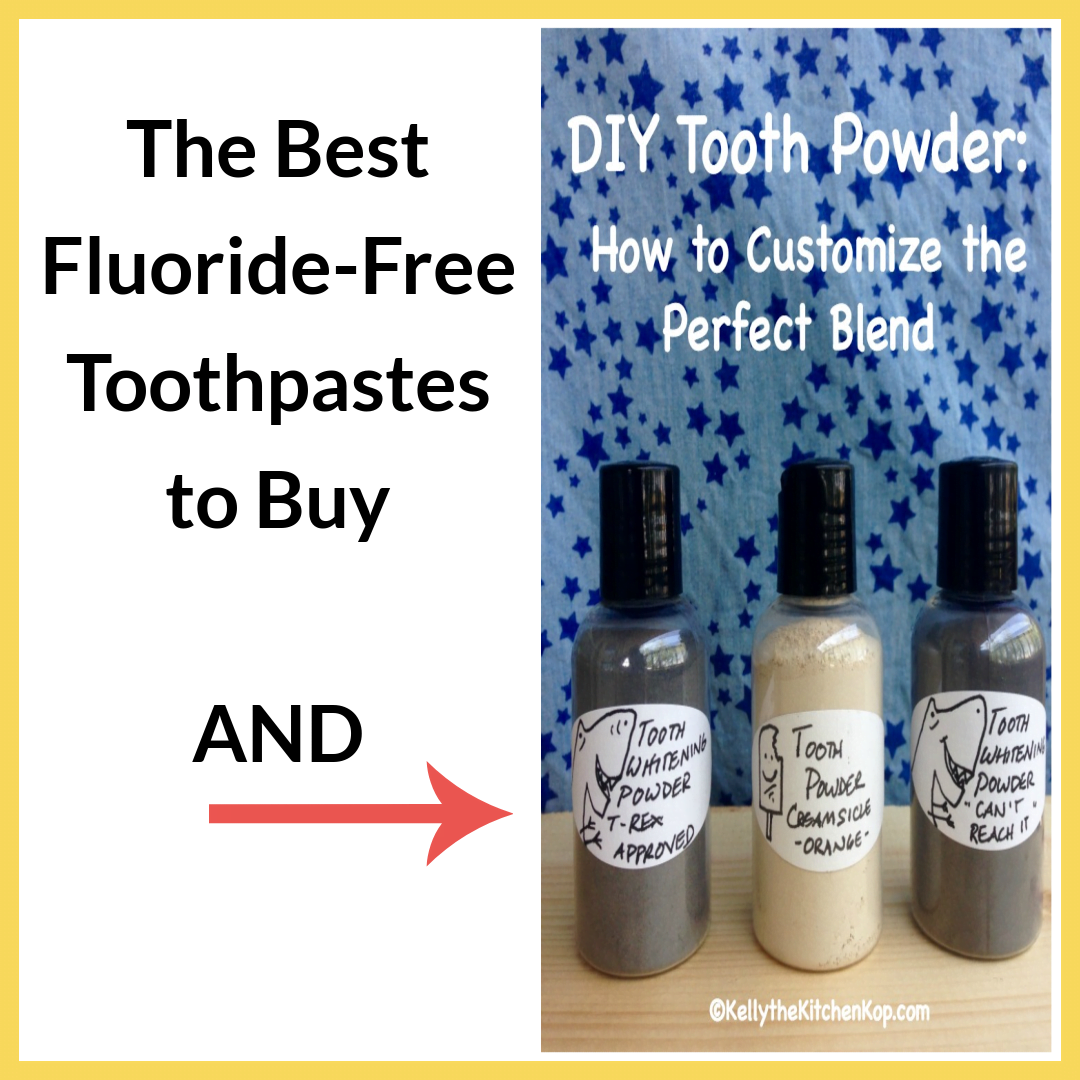
Today find out my favorites: the best toothpastes without Fluoride that you can buy, AND if you like DIY recipes, Jill has the perfect recipe for customizing your own blend!
So I've told you before about my sweet friend Jill, who also used to be my blog assistant, and that she is the DIY GURU! She has a ton of perfected recipes for all sorts of natural products that she sells at the farmers market near her in Texas. I can only imagine how many regular customers she has who scramble to get her Happy Stuff products each week! Obviously she can't share all her secrets with you guys, BUT, she shares a LOT and shows how to make her recipes into wonderfully personal products just for you and your family.
Here are a few of her past posts on making your own healthy and all natural products:
- DIY Laundry Soap, plus Alternative Bleach, Fabric Softener, Deodorizers, and Stain Removers
- How to Make Perfume: DIY Aromatherapy Solid Perfume
- DIY Facial Cleansing Grains: 3-in-1 Cleanser-Exfoliator-Mask
- Homemade Deodorant Powder: DIY Recipe that actually WORKS
So before Jill shows you how to make your own DIY tooth powder, I'll tell you what I think are the best toothpastes without Fluoride that you can buy, and a little about how weird I am…
Here's the thing, I like to switch up my toothpastes, I don't like to use the same thing every day. SO, I brush twice a day and use one of the following, alternating fairly equally between them all:
- This HealThy Mouth Blend drops have been a favorite for a while, and definitely on my ‘best toothpastes without Fluoride' list. I love the flavor and the fresh taste. This is 100% certified organic, it targets gum disease, and balances your oral flora.
- For remineralization AND whitening, I really like SHINE powder. (I get the cinnamon flavor so it doesn't interact with any homeopathic remedies I might be taking.)
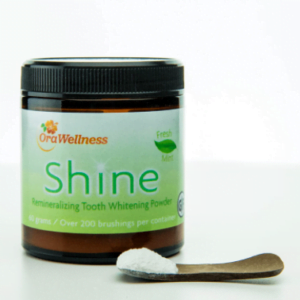
- Because I'm on a mission to get my teeth whiter, another option on my list of best toothpastes without Fluoride: straight baking soda with a few of these drops. But I don't do this as often because I've heard it's not the best for your teeth, see more comments on this from Jill below and/or read this article: Is baking soda safe to brush with?
- Even though I know all of the ingredients aren't sparkly, I still buy and use this “regular” toothpaste now and then, knowing that at least it has no Fluoride and is a little better than commercial toothpastes.
~~~~~~~~~~~~~~~~
So that's my list of the best toothpastes without Fluoride, now here's Jill!
DIY tooth powder and how to customize the perfect blend based on your own preferences…
If the idea of using a tooth powder seems strange, you might be surprised to learn that tooth powders have been around since between 3000 and 5000 B.C.! It wasn't until the 1850s that commercial toothpastes became available. Tooth powders are not used straight on the teeth in a dry form, but become paste-like once reconstituted with water prior to using.
So what's wrong with commercial toothpastes? Most contain at least some of the following toxic ingredients:
- Triclosan: endocrine disruptor (now under review by the FDA for safety concerns
- Fluoride: responsible for the poison control warning on the back of toothpaste tubes. The fluoride in toothpaste is not the naturally occurring form, but an industrial waste product of the chemical fertilizer industry. Dr. Weston A. Price, in his travels during the early part of the 20th century, studied indigenous populations around the world with perfect physical and dental health. None of them were using fluoride toothpaste—few had even seen a toothbrush. Read more about the dangers of fluoride here and here.
- Titanium Dioxide: possible human carcinogen used to whiten toothpaste.
- Artificial Colors: Linked to hyperactivity and mood disorders in children
- Sodium Laurel Sulfate (SLS): Surfactant and foaming agent capable of breaking down protective lining in mouth, leaving it vulnerable to irritation and canker sores and possibly even cancer.
- Artificial Sweeteners: Linked with many disorders including birth defects, epilepsy, cancer, diabetes, and more. Read more here.
With friends like the above, who needs enemies, right?
It just makes sense to make your own, plus you'll save money. If you'd rather not make it, you could us the new tooth powder mentioned above that Kelly likes (find it here), and a natural, completely non-toxic toothpaste based on clay that also works great, called Earthpaste. (Note from Kelly: This one could also be on the “Best Toothpastes without Fluoride” list too!)
Ingredients and their Functions in Tooth Powder
***First choose from the below options to customize your own blend, then find specific recipes further down — click on the links for where to get the ingredients I've found are best…
Clay — choose one for your base:
- Bentonite Clay: Rich in minerals, detoxifying, polishing, great cleanser, alkalizing. Bentonite is a magnetic clay whose properties are activated with water. Its magnetic quality is the mechanism for detoxing—the strong negative charge draws positively charged particles to itself, enabling it to adsorb toxins and heavy metals including mercury and other heavy metals. Contact with metal deactivates some of its magnetic potency, so be sure to use a non-metallic: bowl for mixing, utensil for stirring, and container for storing. I find that I need to use more water on my tooth brush when my tooth powder is bentonite clay-based because bentonite is VERY absorbent. Regarding concerns over lead content raised by Proposition 65 in California, see note below (*).
- Kaolin Clay: A gentle cleanser, polisher and whitener, rich in minerals, alkalizing. Less absorbent than bentonite, reducing the amount of water you'll need to add to your tooth brush. I also find it slightly less cleansing and polishing than bentonite, which could make it a better choice for children.
Other Ingredients:
- Activated Charcoal: Incredibly effective tooth stain remover and whitener, draws out and absorbs toxins (which is why it’s also used in emergency rooms as first aid for poisoning). The cool thing about its whitening action is that since it doesn’t *bleach* the teeth like peroxide does it is perfectly safe to use and doesn’t cause tooth sensitivity. The downside is that it’s a bit messy. Also, because of the lightweight, “dusty” quality you need to be careful while handling it–not only can it be messy, but it can easily become airborne and inhaled, which is quite irritating to the lungs (ask me how I know this). I personally wear a dust mask when I mix up tooth powder, but I make large batches too.
- Baking Soda: Alkaline—neutralizes acids in mouth that can contribute to tooth decay, and an effective, though somewhat abrasive polisher. Personally, I've found brushing with straight baking soda can be very irritating to my gums and many also find it too abrasive for their teeth, so if I include it in tooth powder, I only use it in a very small amount. The flavor is also strong, salty, and a little “soapy”—another reason I go easy on baking soda.
- Sea Salt: Contains a vast array of trace minerals when in its unprocessed, raw form. It also helps to heal mouth sores and is tightening to gums. If you don't have finely ground sea salt (I'm talking about real, raw mineral salt, not the industrial bleached stuff) try grinding it to a finer powder in a (clean) coffee bean grinder or mortar and pestle so it’s not too abrasive. Use in small amounts so as not to overwhelm your tooth powder.
- Calcium Carbonate Powder: Strengthens tooth enamel, mildly abrasive.
- Stevia: Sugar free natural sweetener either derived from or ground directly from the stevia plant. The processed (white) version is far more concentrated, so you would use much less than you would the whole powdered leaf. If using the powdered leaf, start with only a small amount (like 1 teaspoon per cup of finished tooth powder) and add to taste from there.
- Vanilla powder: Great flavor and fragrance that goes really well with some essential oils (like peppermint or orange) and much easier to mix in with your tooth powder than vanilla extract, which tends to clump really badly in the clay. Again, ask me how I know this.
- Menthol Crystals: Menthol is what gives peppermint its cool, refreshing quality. I pulverize menthol crystals with a mortar and pestle and then sift it through a fine mesh strainer (to remove large chunks) to increase the refreshment factor. Start with a small amount, like one “crystal” per cup of finished powder, and work up to taste — it's strong!
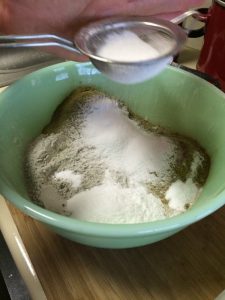
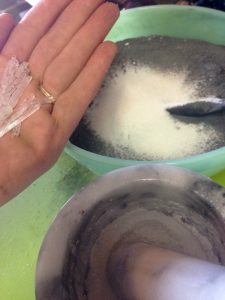
Herbs and botanicals with various therapeutic properties.
Choose one or more of the following according to your needs, not an exhaustive list: (Note: if any desired ingredient is unavailable in powder form, simply grind into powder with a clean coffee bean grinder or mortar and pestle before adding. Sift through fine mesh strainer if needed.)
- Horsetail Herb Powder: Of all plants, horsetail is highest in the mineral, silica, which is strengthening to teeth. It's also an excellent natural polisher. Horsetail herb can sometimes add a bitter taste if you use too much, so start with less and taste first before adding huge amounts.
- Licorice Root Powder: Natural sweetener, contains compounds that may help prevent tooth decay and gum disease.
- Cloves (ground): Soothing to sensitive gums and teeth, antibacterial.
- Cinnamon (ground): Antibacterial, sweet flavor
- Myrrh (powder): Antibacterial, healing, soothing, therapeutic for gums
- White Oak Bark: Anti-inflammatory, astringent, tightening and healing to gum tissue
- Plantain: Good all purpose first aid herb, infection fighting, healing, tightens gum tissue.
- Orange Peel Powder: Whitening, gentle polisher, contains vitamin C and other antioxidants.
- Powdered Turmeric: Anti-inflammatory and antioxidant. While I’ve read that turmeric is a good tooth whitener, I’ve not personally tried it. I generally use activated charcoal for this purpose. I have also noticed good results with orange peel powder. Even if turmeric whitens teeth, it stains clothes and countertops, so handle with care.
- Slippery Elm Powder: Soothing to mouth tissues, lubricating (slippery elm is a soothing mucilage for the entire G.I. tract, which is why it is also used in sore throat remedies and as a tea for diarrhea and tummy upset).
- Marshmallow Root Powder: Similar to Slippery Elm Powder, often used interchangeably
- Prickly Ash: AKA “toothache tree”, healing, increases circulation, antiseptic, soothes gum and tooth pain
- Sage: Whitening, antibacterial, anti-inflammatory
Probiotics are another therapeutic ingredient that can be added in small amounts (open a capsule or few and mix in with your powder). Dr. Natasha Campbell McBride actually recommends opening a probiotic capsule and pouring it into the mouth before bed for children with “glue ear” to help colonize the back of the ear/nose/throat area with healthy bacteria (page 315 Gut and Psychology Syndrome). Our mouth has its own balance of flora.
Keep in mind most essential oils have antimicrobial properties, some more than others so if you want to add probiotics go easy on the essential oils (and don’t use strong antimicrobials like tea tree or Germ Fighter Synergy—see below) or leave them out completely. In this case, try simply flavoring your tooth powder with vanilla powder or ground herbs (like spearmint or licorice) and maybe a tiny bit of orange essential oil if you want something more in the flavor department.
Essential oils:
- Peppermint: Very refreshing, antimicrobial, pain relieving due to menthol content
- Spearmint: Refreshing, a milder, more sweet mint flavor than peppermint. Better for kid tooth powders than peppermint.
- Clove: Good pain reliever (numbing) and antimicrobial. Can be “hot” if used in excess.
- Cinnamon: Antibacterial and has an awesome, sweet/hot flavor in tooth powder but be aware that too much can leave you with a temporary red rash wherever it touches your skin. Not for children.
- Lemon: Refreshing and wonderful flavor
- Orange: Good choice for kids. I like it too! Great with some vanilla powder added to the mix (think: Creamsicle flavor)
- Frankincense: Believe it or not, this is actually quite nice in tooth powder and very healing to mouth sores and irritations. Frankincense is anti-inflammatory, anti-oxidant, anti-microbial (to some extent) and soothing.
- Myrrh: Very healing and therapeutic for gums, toothache, and mouth sores. A little amount goes a long way.
- Germ Fighter Synergy: Tastes awesome and makes my teeth and mouth feel extra clean, but see note above on cinnamon oil and its potential for skin irritation. Not for children.
- Tea Tree: Strong antimicrobial, soothing, medicinal
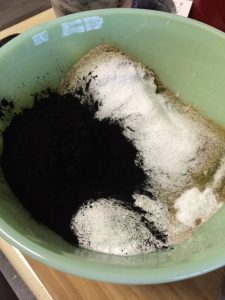
Sample Tooth Powder Formulas
(*Note: “part” can be any measure from a tablespoon to a cup, depending on your batch size.)
The Simplest Tooth Powder:
- Combine clay of choice and essential oils to taste (start with a few drops per tablespoon), worked in with your fingers to remove clumps. Easy peasy and great in a pinch.
A More “Sophisticated” Basic Tooth Powder:
- 2 parts clay of choice (for example, 2 cups)
- 1 part powdered herbs and other therapeutic additions if desired. If using baking soda, sea salt, probiotics, etc., obviously you'd use only a very small amount. Think of those ingredients more like “seasoning” for your recipe, rather than major components.
- Stevia leaf powder to taste (optional)
- Essential oils to taste (start with a few drops per tablespoon) and/or other natural flavoring agents like vanilla powder or menthol
Therapeutic Herbal Tooth Powder: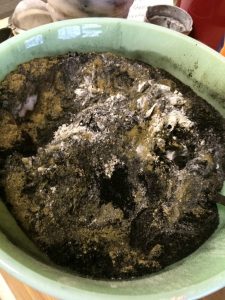
- 1 part clay of choice
- 1 part therapeutic herbs in any combination
- Stevia leaf powder to taste (optional)
- Essential oils or other natural flavoring agents to taste
(*Note: Even though I prefer using clay in my tooth powders, some therapeutic tooth powder formulas are based on 100% herbs.)
Whitening Tooth Powder:
- 2 parts clay of choice
- 1 part activated charcoal
- 1/2 to 1 part herbs or other other therapeutic ingredients (optional)
- Stevia leaf powder to taste (optional)
- Essential oils or other natural flavoring agents to taste
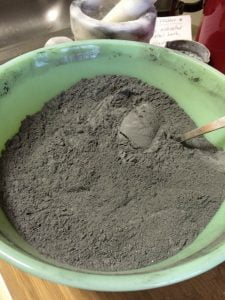 Soothing Tooth Powder:
Soothing Tooth Powder:
- 2 parts clay of choice
- 1 part combination of, or equal parts: powdered turmeric, plantain, and slippery elm or marshmallow root
- Stevia leaf powder to taste (optional)
- Essential oils: clove, frankincense, and peppermint
***Cinnamon tooth whitening powder (especially good for those taking homeopathic remedies, since mint can act as an antidote):
- 2 cups Bentonite Clay
- 1 cup Activated Charcoal
- 1.5 teaspoon Horsetail Herb Powder per 1 cup of tooth powder so 4.5 tsp or 1T + 1.5 tsp
- 3 Tablespoons Stevia leaf powder
- 75 drops Cinnamon oil
Mix everything together in a bowl. Adjust the stevia and cinnamon oil to your own taste. Just work the clumps out with your fingers or the back of a spoon. Transfer to a container of your choice — see the next paragraph.
NOTE FROM KELLY: For an even easier mint-free toothpaste option, just use this cinnamon oil and put a drop into your hand with some cold water (it needs to be diluted or it's strong and will burn a bit) and brush with that. This works well to freshen breath!
Containers:
Just like with my DIY powder deodorant, I've found a repurposed, clean plastic bottle like this one (pictured at the top of this post) with a disc-style click open lid (normally used for liquids/gels) and it works surprisingly well as a powder dispenser. You can also use a glass jar.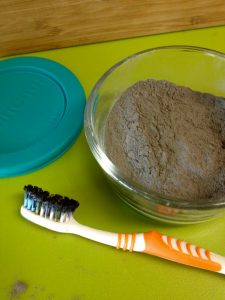
How to use tooth powder:
While you can just dip your wet toothbrush into a jar of tooth powder before brushing, I never do that and here’s why: I’ve found that a wet tooth brush also drips water into the powder still in the jar, which results in much of the powder getting wasted when that water evaporates and you’re left with hard chunks of solid clay that can’t be used. Plus, if you’re sharing that jar of tooth powder with everyone else in the house you might as well also be sharing tooth brushes.
Instead, I either:
- Scoop out a small amount from a jar into my hand and then use my wet tooth brush to “pick up” that powder, or…
- Store my powder in a clean, empty bottle with a snap disc cap/lid. I just click open the cap, sprinkle some tooth powder into my hand, and then pick up that powder with my wet tooth brush.
Brush your teeth (and tongue) like your normally would with toothpaste, spit in your sink, and rinse. You may need to splash some water around your sink, especially if your tooth powder contains activated charcoal, so that you don’t end up with a messy, dried clay splattered sink.
Some people have asked me about the clay posing a risk to plumbing, but we’ve never had a problem with it. The amount of clay used for each tooth brushing is minimal and it gets rinsed down the drain with plenty of water.
* Note on lead content in bentonite clay: Proposition 65 in California has stirred up some controversy regarding lead content in bentonite clay. At this point I am not concerned for a few reasons. First, many fruits, vegetables, and even uncontaminated soil itself also naturally contain small amounts of lead, but were not included among items requiring “warning” labels by Proposition 65. Secondly, bentonite clay has actually been shown in a number of studies to be useful for reducing lead levels in the body (here, here, and here), and even for fighting infection, including MRSA, when used topically. When used for brushing teeth, the clay is spit out, rather than ingested, which reduces concern even more. For further reading, Katie at Wellness Mama has also addressed concerns over lead in bentonite clay here.
Of course all the best dental care products and brushing in the world can't replace a nutrient-dense diet!
This not only provides the building blocks for strong and healthy teeth, but also for repair. Read more about how nutrition can actually heal teeth in the book, Cure Tooth Decay.
More you might like:
 About Jill: My husband and I live in Waco, TX, along with our two awesome young adult kids (AND now in Dallas part-time while my husband attends chiropractic college). I have a small business selling handmade personal and home care products at our farmer’s market and local retail sites. I am also Kelly’s blog assistant. I am passionate about real food nutrition, natural health, local food, and I love to cook. Fortunately we have access to lots of local food via Waco’s fantastic year-round farmer’s market, nearby farms, and even a grocery store that sources much of its food locally. See all my posts here.
About Jill: My husband and I live in Waco, TX, along with our two awesome young adult kids (AND now in Dallas part-time while my husband attends chiropractic college). I have a small business selling handmade personal and home care products at our farmer’s market and local retail sites. I am also Kelly’s blog assistant. I am passionate about real food nutrition, natural health, local food, and I love to cook. Fortunately we have access to lots of local food via Waco’s fantastic year-round farmer’s market, nearby farms, and even a grocery store that sources much of its food locally. See all my posts here.
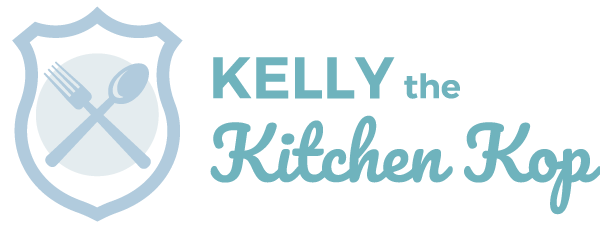






Grace says
Would you recommend black walnut husk powder as an addition to a diy tooth powder for its claimed ability to help ‘heal’ cavities.
KitchenKop says
Sorry I’ve never heard about this! Would love to hear about your experience with it though.
Kelly
Betty Pearson says
Any suggestions for those of us using homeopathy and can’t use mint essential oils, or mint anything? I have very sensitive teeth, and most tooth powders don’t help sensitive teeth. A cold drink or food will get those sensitive teeth “singing”.
KitchenKop says
Betty,
If you go here (https://kellythekitchenkop.com/toothpaste) & request mint-free, I think they’ll make you some as a special order! Just tell them I sent you. Although it was my understanding that if you use a little mint and you always have, it’s not likely to interfere with the homeopathics.
Kelly
Jill Boman says
Try the soothing tooth powder recipe in the post, but leave out the mint essential oil. You can also try orange essential oil–It’s surprisingly refreshing, actually. It’s also recommended to allow at least 20 minutes with no food, drink, or tooth brushing before and after taking homeopathic remedies.